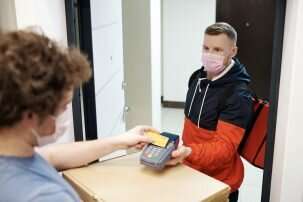Report outlines path to safe reopening during COVID-19

A new report from Columbia University's National Center for Disaster Preparedness outlines the necessary steps to ensure a safe reopening of local economies during the COVID-19 pandemic. The April report, entitled "Work in the Time of Pandemic," establishes the current realities of the outbreak and puts forward broad guidelines for what it refers to as Phase 1 of reopening. Phase 1 does not entail a full recovery of the economy but rather aims to return businesses to a modified state of operation.
"There are a lot of Americans who need to go back to work, and the challenge is how to make that happen without putting employees and customers at risk of contracting COVID-19," explained Irwin Redlener, director of the National Center for Disaster Preparedness and co-author of the report. Central to the report recommendations are (1) there needs to be a significant up-scaling of testing to determine when people can return to work safely, and (2) even with widespread, accessible testing, businesses across all industries will have to fundamentally change how they do things.
These recommendations come as state and local governments across the country begin to lift or partially lift their lockdowns. The Centers for Disease Control (CDC) has advised governors to wait for cases of COVID-19 to steadily decrease for at least 14 days before initiating plans to reopen. Cases of COVID-19 are confirmed and documented through diagnostic testing. National levels of diagnostic testing, however, are far from where they need to be. Recent data published by the Rockefeller Foundation and cited in the report suggests up to 30 million people should be tested each week for the next 6 months—4-10 times the number of people who were tested in late April.
One of the key unknowns highlighted in the report is how many people may be infected with the virus without experiencing symptoms. These asymptomatic carriers are likely to be underrepresented in counts of daily cases and could unknowingly spread the virus to other, more vulnerable individuals. Increased diagnostic testing and contact tracing is therefore crucial to accurately track the prevalence of the outbreak in a community, Redlener said. With a better understanding of infection rates, officials can make more informed, prudent decisions about when the outbreak has slowed enough to warrant reopening.
A massive expansion in testing capacity is also necessary to verify, on an individual level, whether someone is healthy enough to go into work. "We need to have rapid 'point of care' testing for the presence of the virus available everywhere," said Redlener. "It is about whether these people you are going to see are safe to be around." With the development of rapid testing technology, employees would ideally be able to administer a test at home and receive their results moments afterwards.
Even under these conditions, all businesses will have to implement new COVID-19 policies, the report said. At minimum, businesses will need to enforce physical distancing, require face coverings, limit the size of gatherings, and provide stations for hand washing and/or sanitizing.
"With a little creativity and imagination, we can open a lot of businesses," Redlener said. "People should be able to return to construction or retail. That is doable."
Other businesses, particularly those that require direct contact with customers—such as barbershops and dine-in restaurants—should "categorically remain closed" until additional adaptive measures are possible, said Redlener. He advised that if these businesses do not remain closed, then employees should be rapid-tested before starting each shift. In addition, operators and crews of public transportation should be separated from passenger areas by partitions. Audience members of theaters should be screened for fever and asked symptom questions before entering the venue. Also included in the report are guidelines for public transportation, auto dealerships, taxi and car services, and museums.
One potential consequence of the country's patchwork reopening is that, as one area shows signs of recovering, a neighboring area still battling COVID-19 may pose an ongoing threat. "There is no doubt in my mind that we will see surges of the outbreak in the areas that have reopened," said Redlener. "Second and third waves would not be unexpected even if we had done everything right. The question is what will we do when a second wave comes?" He acknowledged one possible outcome is that communities will need to reimpose their lockdown restrictions to bring infection rates back down again.
Sufficient testing will take at least 4-6 months to be made nationally available, according to the report. An effective and affordable vaccine for COVID-19 is unlikely to come before mid-2021. Until then, Redlener urges everyone to continue following public health guidelines, even if their state is reopening. "Reopening is not the same as going back to life as it was before the pandemic," he said. "We are not in a normal situation. We are not going to be in a normal situation anytime soon. This is all-encompassing, and we have to stick to the plan to keep the coronavirus to an absolute minimum."
This story is republished courtesy of Earth Institute, Columbia University http://blogs.ei.columbia.edu.



















